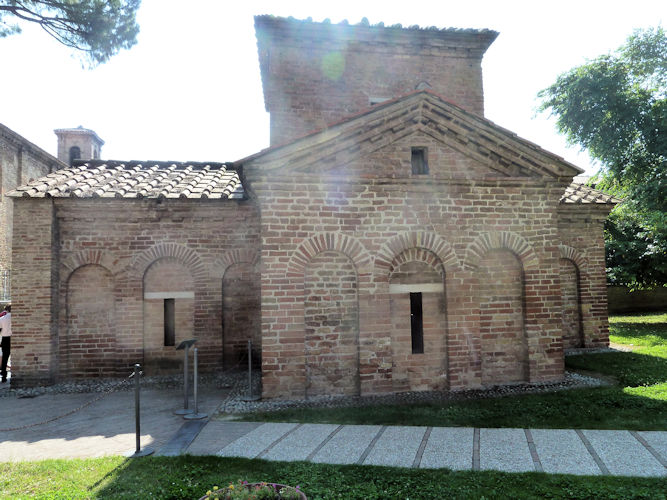

- The Mausoleum of Galla Placidia (386-452), sister of the Roman emperor Honorius, is a Christian
funerary monument in Ravenna, Italy, built in the shape of a Latin cross
- Le Mausolée de Galla Placidia (386-452), sœur de l'empereur romain Honorius, est un monument
funéraire chrétien à Ravenne, en Italie, construit sous la forme d'une croix latine


- The Mausoleum of Galla Placidia, a Roman building in Ravenna, was listed with seven other
structures in Ravenna in the World Heritage List in 1996.
- Le Mausolée de Galla Placidia, un bâtiment romain à Ravenne, a été inscrit avec sept autres
structures à Ravenne dans la Liste du patrimoine mondial en 1996.
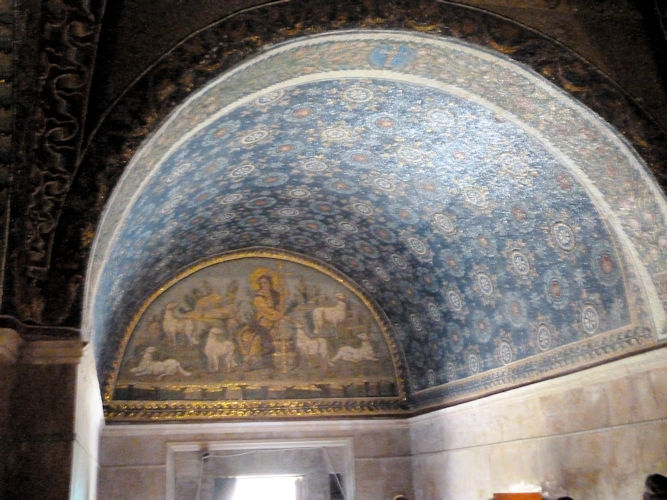

- Rich Byzantine mosaics cover the walls and the ceiling of the mausoleum. This mosasic set in the
intense blue and its 570 golden stars represents the Garden of Eden, with The Good Shepherd.
- De riches mosaïques byzantines couvrent les murs et le plafond du mausolée. Cette mosasic dans
un bleu bleu intense et ses 570 étoiles dorées représente le Jardin d'Eden, avec le Bon Pasteur.
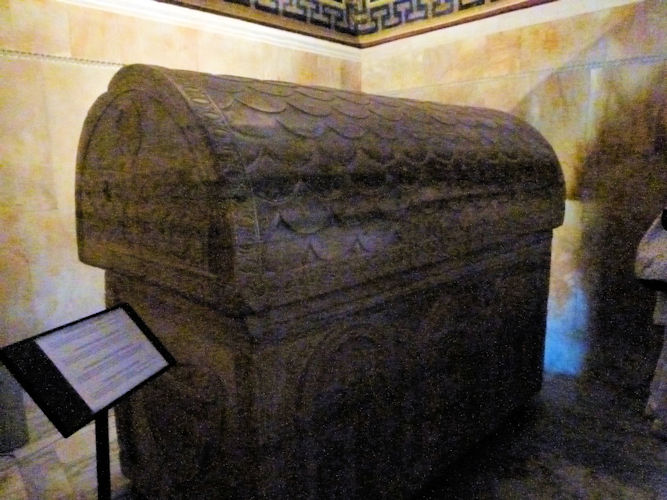

- The mausoleum now contains three sarcophagi attributed to Galla Placidia (died 450), daughter of the
Roman Emperor Theodosius I, the one on the right to Galla's son, Emperor Valentinian III, or to her brother,
Emperor Honorius. The one on the left (this picture) is attributed to her husband, Emperor Constantius III.
- Le mausolée contient maintenant trois sarcophages attribués à Galla Placidia (morte en 450), fille de
l'empereur romain Théodose Ier, celui sur la droite au fils de Galla, l'empereur Valentinien III, ou de son frère,
l'empereur Honorius. Celui sur la gauche (cette photo) est attribué à son mari, l'empereur Constance III.
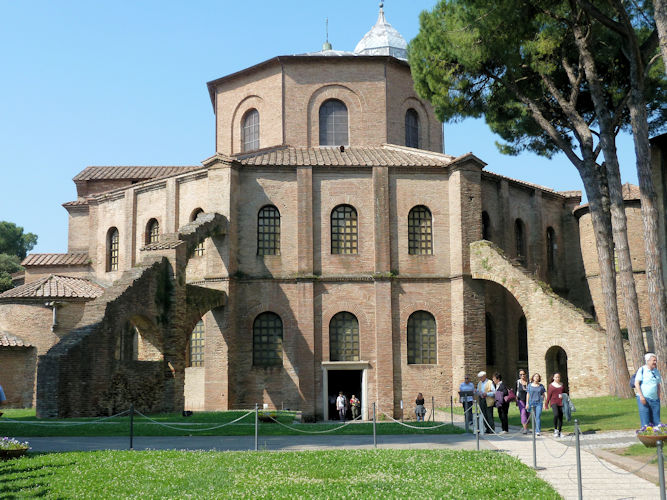

- The Basilica of San Vitale in Ravenna, Italy, is one of the most important examples of early Christian
Byzantine art and architecture in western Europe. Its construction began in 526.
- La basilique de San Vitale à Ravenne, en Italie, est l'un des exemples les plus importants de l'art
byzantin et de l'architecture chrétienne primitive en Europe occidentale. Sa construction a commencé en 526.


- The Basilica San Vitale is one of the greatest works of late Roman art and is famous for its mosaics
commissioned by Archbishop Maximian (546/556 AD)
- La basilique San Vitale est l'une des plus grandes œuvres de l'ancien art romain et est célèbre pour
ses mosaïques commandés par l'archevêque Maximien (546/556 A.D.)
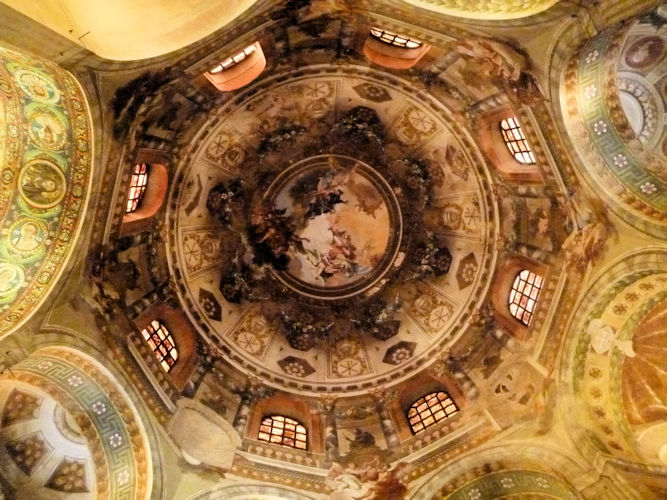

- The beautiful mosaics of the dome of the Basilica San Vitale in Ravenna
- Les belles mosaïques de la coupole de la basilique San Vitale à Ravenne

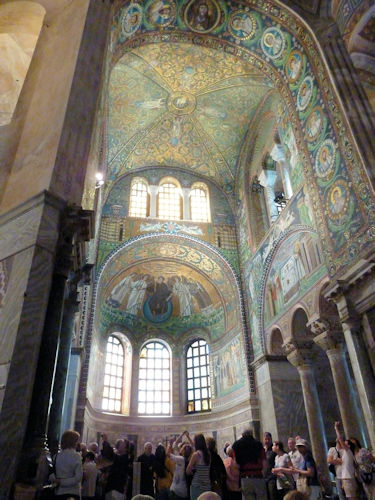

- The cross-ribbed vault in the apse is richly ornamented with
mosaic festoons of leaves, fruit and flowers
- La voûte en croisée d'ogives de l'abside est richement ornée
de festons de feuilles, de fruits et de fleurs en mosaiques
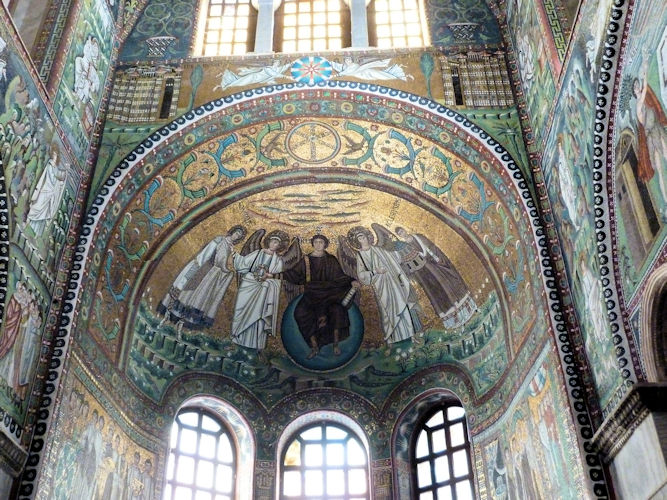

- A mosaic in the apse depicting St. Vital, an angel, Christ, an angel and Bishop Ecclesius
- Une mosaique dans l'abside représentant Saint Vital, un ange, le Christ, un ange, l'évêque Ecclésius.


- The Piazza del Popolo (1480) in Ravenna, Italy, with the Little Venetian Palace in the background
and two columns (1483) with the statues of St. Vitalis and St. Apollinare.
- La Piazza del Popolo (1480) à Ravenne, en Italie, avec le Petit Palais Vénitien en arrière plan et
deux colonnes (1483) avec les statues de Saint-Vital et Saint-Apollinaire.

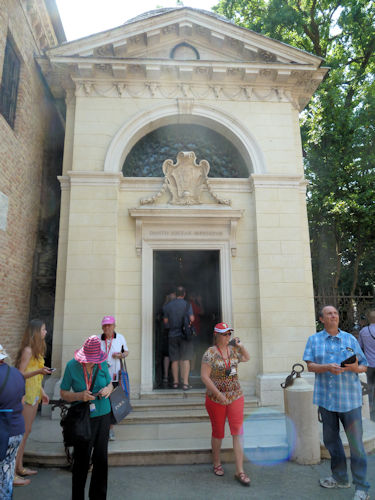

- Dante's tomb in Ravenna, built in 1780. Dante
(1265–1321) was a famous Italian poet.
- La tombe de Dante à Ravenneconstruite en 1780.
Dante (1265-1321) était un célèbre poète italien.

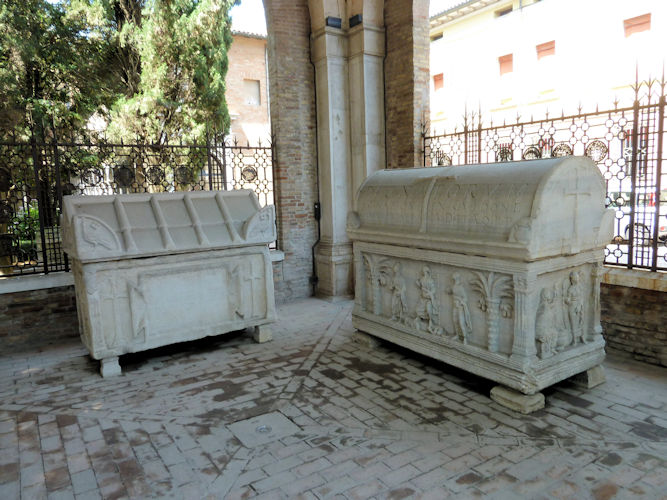

- Ancient Roman sarcophagi near Dante's tomb
- Anciens sarcophages romains près de la tombe de Dante